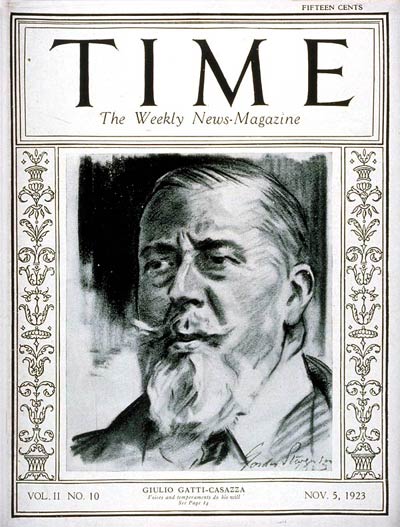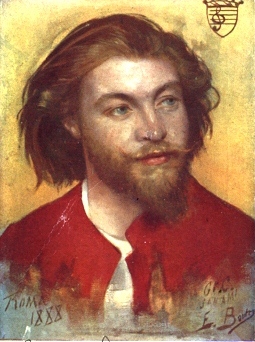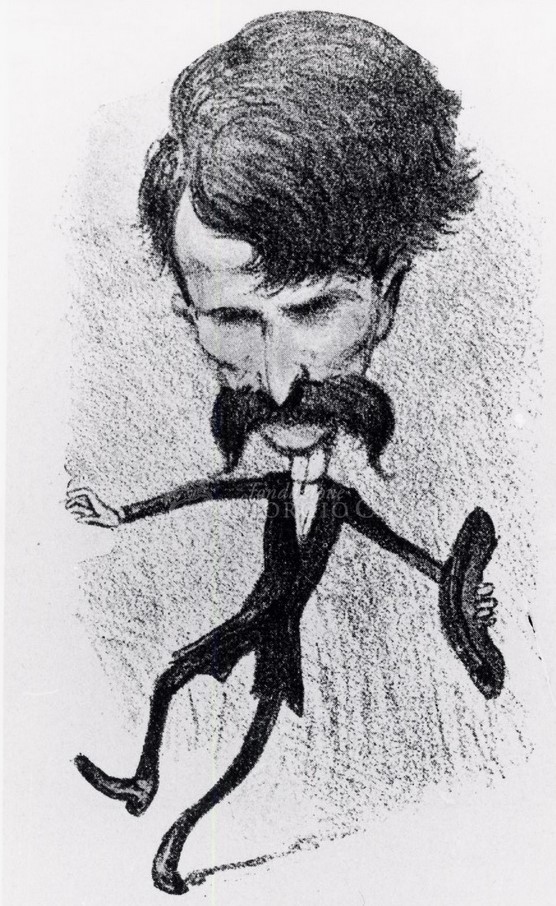|
Marie Sundelius
Marie Sundelius (born Marie Sundborg; 4 February 1882 – 27 June 1958) was a Swedish-American classical soprano. She sang for many years with the Metropolitan Opera in New York City and later embarked on a second career as a celebrated voice teacher in Boston. Early life and education Born Marie Sundborg in Karlstad, Sweden, Sundelius moved to the United States at the age of nine, ultimately settling in Boston with her family in 1894. She graduated from The Dearborn School in 1897. She began to study music first with Frederick Bristol and later Enrica Clay Dillon. She also had coaching lessons with Swedish composer, Wilhelm Peterson-Berger in Stockholm, and French lyric tenor Edmond Clément in Paris. She married Gustaf Sundelius, a Swedish born businessman, in Boston in 1906. Career Sundelius began performing professionally in concerts and oratorios in Boston in 1910, making her debut performance under the baton of Karl Muck. In December 1915 she came to New York City for t ... [...More Info...] [...Related Items...] OR: [Wikipedia] [Google] [Baidu] |
Soprano
A soprano () is a type of classical female singing voice and has the highest vocal range of all voice types. The soprano's vocal range (using scientific pitch notation) is from approximately middle C (C4) = 261 Hz to "high A" (A5) = 880 Hz in choral music, or to "soprano C" (C6, two octaves above middle C) = 1046 Hz or higher in operatic music. In four-part chorale style harmony, the soprano takes the highest part, which often encompasses the melody. The soprano voice type is generally divided into the coloratura, soubrette, lyric, spinto, and dramatic soprano. Etymology The word "soprano" comes from the Italian word '' sopra'' (above, over, on top of),"Soprano" '' |
Giulio Gatti-Casazza
Giulio Gatti-Casazza (3 February 1869 – 2 September 1940) was an Italian opera manager. He was general manager of La Scala in Milan, Italy, from 1898 to 1908 and later the Metropolitan Opera in New York City from 1908 to 1935. Biography Gatti-Casazza was born on 3 February 1869 in Udine, in northeastern Italy. In 1893 he succeeded his father as manager of the municipal theatre in Ferrara. He was manager of La Scala from 1898 to 1908, before his move to New York City, when he became general manager of the Metropolitan Opera from 1908 to 1935. Under his leadership the Metropolitan enjoyed a prolonged era of artistic innovation and musical excellence. He brought with him conductor Arturo Toscanini, who became the company's principal conductor and led performances of Verdi, Wagner and others that set high standards for the Metropolitan which have endured to the present day. The Viennese composer Gustav Mahler also was a Met conductor during Gatti-Casazza's first two season ... [...More Info...] [...Related Items...] OR: [Wikipedia] [Google] [Baidu] |
L'Africaine
''L'Africaine'' (''The African Woman'') is an 1865 French ''grand opéra'' in five acts with music by Giacomo Meyerbeer and a libretto by Eugène Scribe. Meyerbeer and Scribe began working on the opera in 1837, using the title ''L'Africaine'', but around 1852 changed the plot to portray fictitious events in the life of the Portuguese explorer Vasco da Gama and introduced the working title ''Vasco de Gama'', the French version of his name. The copying of the full score was completed the day before Meyerbeer died in 1864. The opera was premiered the following year by the Paris Opéra in a version made by François-Joseph Fétis, who restored the earlier title, ''L'Africaine''. The Fétis version was published and was used for subsequent performances until 2013, when some productions and recordings began using Meyerbeer's preferred title, ''Vasco de Gama'', for performing versions with revisions based on the manuscript score. In 2018 the music publisher Casa Ricordi, Ricordi issued a ... [...More Info...] [...Related Items...] OR: [Wikipedia] [Google] [Baidu] |
The Ring Cycle
(''The Ring of the Nibelung''), WWV 86, is a cycle of four German-language epic music dramas composed by Richard Wagner. The works are based loosely on characters from Germanic heroic legend, namely Norse legendary sagas and the ''Nibelungenlied''. The composer termed the cycle a "Bühnenfestspiel" (stage festival play), structured in three days preceded by a ("preliminary evening"). It is often referred to as the ''Ring'' cycle, Wagner's ''Ring'', or simply ''The Ring''. Wagner wrote the libretto and music over the course of about twenty-six years, from 1848 to 1874. The four parts that constitute the ''Ring'' cycle are, in sequence: * ''Das Rheingold'' (''The Rhinegold'') * ''Die Walküre'' (''The Valkyrie'') * ''Siegfried'' * ''Götterdämmerung'' (''Twilight of the Gods'') Individual works of the sequence are often performed separately, and indeed the operas contain dialogues that mention events in the previous operas, so that a viewer could watch any of them without h ... [...More Info...] [...Related Items...] OR: [Wikipedia] [Google] [Baidu] |
Parsifal
''Parsifal'' ( WWV 111) is an opera or a music drama in three acts by the German composer Richard Wagner and his last composition. Wagner's own libretto for the work is loosely based on the 13th-century Middle High German epic poem ''Parzival'' of the ''Minnesänger'' Wolfram von Eschenbach, recounting the story of the Arthurian knight Parzival (Percival) and his quest for the Holy Grail. Wagner conceived the work in April 1857, but did not finish it until 25 years later. In composing it he took advantage of the particular acoustics of his Bayreuth Festspielhaus. ''Parsifal'' was first produced at the second Bayreuth Festival in 1882. The Bayreuth Festival maintained a monopoly on ''Parsifal'' productions until 1903, when the opera was performed at the Metropolitan Opera in New York. Wagner described ''Parsifal'' not as an opera, but as (a festival play for the consecration of the stage). At Bayreuth a tradition has arisen that audiences do not applaud at the end of the first ... [...More Info...] [...Related Items...] OR: [Wikipedia] [Google] [Baidu] |
L'italiana In Algeri
''L'italiana in Algeri'' (; ''The Italian Girl in Algiers'') is an operatic ''dramma giocoso'' in two acts by Gioachino Rossini to an Italian libretto by Angelo Anelli, based on his earlier text set by Luigi Mosca. It premiered at the Teatro San Benedetto in Venice on 22 May 1813. The music is characteristic of Rossini's style, remarkable for its fusion of sustained, manic energy with elegant, pristine melodies. Composition history Rossini wrote ''L'italiana in Algeri'' when he was 21. Rossini stated that he composed the opera in 18 days, though other sources claim that it took him 27 days. Rossini entrusted the composition of the recitatives as well as the aria "Le femmine d'Italia" to an unknown collaborator. The opera is notable for Rossini's mixing of opera seria style with opera buffa. The overture is widely recorded and performed today, known for its distinct opening of slow, quiet pizzicato basses, leading to a sudden loud burst of sound from the full orchestra. This "surp ... [...More Info...] [...Related Items...] OR: [Wikipedia] [Google] [Baidu] |
Don Carlo
''Don Carlos'' is a five-act grand opera composed by Giuseppe Verdi to a French-language libretto by Joseph Méry and Camille du Locle, based on the dramatic play '' Don Carlos, Infant von Spanien'' (''Don Carlos, Infante of Spain'') by Friedrich Schiller. In addition, several incidents, of which the Forest of Fontainebleau scene and ''auto-da-fé'' were the most substantial, were borrowed from Eugène Cormon's 1846 play ''Philippe II, Roi d'Espagne''. The opera is most often performed in Italian translation, usually under the title ''Don Carlo''. The opera's story is based on conflicts in the life of Carlos, Prince of Asturias (1545–1568). Though he was betrothed to Elisabeth of Valois, part of the peace treaty ending the Italian War of 1551–59 between the Houses of Habsburg and Valois demanded that she be married instead to his father Philip II of Spain. It was commissioned and produced by the Théâtre Impérial de l'Opéra (Paris Opera) and given its premiere at the Sa ... [...More Info...] [...Related Items...] OR: [Wikipedia] [Google] [Baidu] |
L'oiseau Bleu (opera)
''L'oiseau bleu'' (''The Blue Bird'') is an opera in four acts (eight tableaux) by the French composer and conductor Albert Wolff. The libretto by Maurice Maeterlinck is based on his 1908 play of the same name. Boris Anisfeld designed the sets. Performance history It was first performed at the Metropolitan Opera House, New York City on 27 December 1919. Maeterlinck, the playwright and Nobel laureate, was present at the premiere, which, in the immediate aftermath of World War I, was a benefit for four charities: the Queen of the Belgians Fund, the Millerand Fund for French Orphans, the Three Big Sister Organizations (Catholic, Protestant, Jewish), and the Milk for the Children of America Fund. The first Belgian performance was on 21 April 1920, and it was revived at the Théâtre de la Monnaie The Royal Theatre of La Monnaie (french: Théâtre Royal de la Monnaie, italic=no, ; nl, Koninklijke Muntschouwburg, italic=no; both translating as the "Royal Theatre of the M ... [...More Info...] [...Related Items...] OR: [Wikipedia] [Google] [Baidu] |
Louise (opera)
''Louise'' is a “musical novel,” or “,” in four acts and five scenes by Gustave Charpentier. It can be considered an opera. The composer himself penned the French libretto with contributions from Saint-Pol-Roux, a symbolist poet and inspiration of the surrealists. It is an atmospheric story of working-class life in Paris, with the city itself invoked along the way: young Louise, a seamstress living with her parents, loves Julien, an artist; she desires freedom, associated in her mind with him and the city. (Charpentier would later write a sequel, the opera ''Julien'', describing the artist's aspirations.) Musically the work is ''verismo'', it marks the beginning of naturalism in French opera. Performance history ''Louise'' was premiered on 2 February 1900 at the Salle Favart by the Opéra-Comique conducted by André Messager in a production by Albert Carré. It was successful, reaching its 100th performance just over a year later; the 500th performance at the Opéra-Comiqu ... [...More Info...] [...Related Items...] OR: [Wikipedia] [Google] [Baidu] |
Loreley (opera)
''Loreley'' is an opera (''azione romantica'') in three acts composed by Alfredo Catalani to a libretto by , and others. It premiered on 16 February 1890 at the Teatro Regio in Turin. Based on the German legend of the Lorelei, the opera is an extensive reworking of Catalani's four-act opera ''Elda'' which had premiered in Turin ten years earlier. Background and performance history The praise received by Catalani's ''La falce'', a one-act opera written while he was a student at the Milan Conservatory, led to Giovannina Lucca offering him a contract for more operas. Lucca ran the music publishing house Casa Musicale Lucca that had acquired the rights to publish Wagner's works in Italy. ''Elda'', his first opera for Lucca premiered to critical success in 1880, followed by ''Dejanice'' in 1883 and ''Edmea'' in 1886. Neither of them had the critical success of ''Elda'', but ''Edmea'' went on to be performed both in Italy and internationally. This prompted Lucca to commission a fourt ... [...More Info...] [...Related Items...] OR: [Wikipedia] [Google] [Baidu] |
Artur Bodanzky
Artur Bodanzky (also written as Artur Bodzansky) (16 December 1877 – 23 November 1939) was an Austrian-American conductor particularly associated with the operas of Wagner. He conducted Enrico Caruso's last performance at the Metropolitan Opera House on Christmas Eve 1920. The son of Jewish merchants, Bodanzky studied the violin and composition with Alexander Zemlinsky Bodanzky then became conducting assistant to Gustav Mahler in Vienna, later going on to jobs in Berlin, the Neues Deutsches Theater in Prague (August 1907), where he was briefly a colleague of Otto Klemperer and Mannheim. In 1915 he emigrated to the United States to work for the Metropolitan Opera, being replaced at Mannheim by Wilhelm Furtwängler. He was head of German repertory at the Met, being accepted by Arturo Toscanini on the recommendation of Ferruccio Busoni. In 1921 he was engaged by the New York Philharmonic as a guest conductor. In 1928, Bodanzky announced his resignation from the Met and was repl ... [...More Info...] [...Related Items...] OR: [Wikipedia] [Google] [Baidu] |
Melanie Kurt
Melanie Kurt (January 8, 1879 in Vienna – March 11, 1941 in New York City) was an Austrian opera singer ( dramatic soprano). Life and career Melanie Kurt (originally Kohn; she legally changed her name to Kurt in 1902) first studied to become a pianist in her native city of Vienna before starting to take singing lessons. Her teacher was the famous Polish pianist Theodor Leschetizky, who had been a pupil of Carl Czerny's. She was successful at the piano, winning the coveted Liszt Prize. Later she went to Berlin, where Marie Lehmann, sister of the great soprano Lilli Lehmann, became her teacher. From 1897 to 1900 she only appeared as a pianist, before she gave her début at the civic theatre in Lübeck as Elisabeth in Richard Wagner's ''Tannhäuser'' in 1902. From 1903 to 1904 she was engaged at Oper Leipzig, after further studies in Berlin she worked in Braunschweig from 1905 to 1908 before returning to Berlin where she sang at the Berlin Hofoper (today's ''Staatsoper ... [...More Info...] [...Related Items...] OR: [Wikipedia] [Google] [Baidu] |

.jpg)
.jpg)




